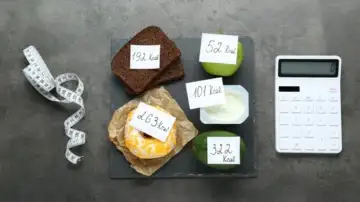Have you tried intermittent fasting? Intermittent fasting is an eating pattern in which you cycle between periods of eating and fasting.
There are various methods, but the core idea is to restrict your eating window, allowing your body to enter a fasting state.
Benefits of intermittent fasting may include everything from weight loss to improved insulin sensitivity and reduced inflammation. One of the popular types of intermittent fasting includes the 16:8 method, where you fast for 16 hours and eat within an 8-hour window.
In an interview with HT Lifestyle, Karan Sarin, metabolic health coach and founder of Sweet Reactions, highlighted what most people get wrong about intermittent fasting and how to do it right. He said that intermittent fasting isn’t a new trend; it’s how our ancestors lived, cycling between feasting and famine. Our bodies are designed for this pattern, and fasting can be a powerful tool for restoring metabolic health, Karan added.
Debunking common intermittent fasting myth
“Intermittent fasting isn’t some new diet trend. Long before farming or agrarian cultures existed, humans were forced to fast involuntarily. When they found food, they feasted, then fasted again for days until the next meal. Cycling between times of famine and feasting was the way of life for our prehistoric ancestors. Your body is still designed for this pattern, and when used deliberately today, fasting becomes a powerful tool to restore metabolic health,” Karan said.
According to him, fasting isn’t about cutting calories; it’s about lowering insulin levels. He said, “If there’s one myth I could permanently extract from your mind, it’s that fasting is about reducing calories. It isn’t. Fasting is about lowering insulin. The idea that intermittent fasting works just because of reduced calories is completely wrong. Counting calories is an unsustainable approach and is the number one reason fasting or any diet fails.”
 How does intermittent fasting work?
How does intermittent fasting work?
Karan said, “Food speaks to your hormones. They decide whether your body stores fat or burns it, and insulin is the one that makes that call. On a typical Indian diet, which is heavy on rice, wheat, and other carbs, insulin levels stay high all day. High insulin means your body is in storage mode, your metabolism slows, and fat burning gets shut off. That’s why so many people feel stuck even when they think they’re eating less.”
Karan explained that when you eat, your body uses glucose for energy, but when you fast, it switches to burning stored fat. This switch happens after eight hours or so of fasting, when glucose levels drop. To stay in a fasted state, avoid anything that raises blood sugar, like sugar or fruit, he said.
“Think of your body like a hybrid car. It can run on two fuels. When you eat, your blood sugar rises and your cells run on glucose. That’s the sugar-burning system. When you stop eating, glucose levels start to fall. After about eight hours, your body flips into the fat-burning system and begins using stored energy. While the exact timing can vary slightly from person to person, fasting is simply giving your body the space to make this switch,” Karan shared.
 Tips for successful intermittent fasting
Tips for successful intermittent fasting
According to Karan, “There is one rule that matters most. Anything that raises blood sugar will pull you out of the fasted state. Even a spoonful of sugar in your tea or a small fruit snack resets you back to glucose burning. If you want the benefits of fasting, you need to keep your blood sugar steady during that window.”
How to manage hunger pangs during fasting?
Karan said the real challenge with fasting is mental. When hunger strikes, ask yourself if you’re truly hungry or just bored. Try distractions like music, a walk, or a nap, he said. If you’re really hungry, a pinch of salt in water or black coffee can help.
“The real challenge with fasting is mental, not physical. When hunger hits while you’re fasting, it often comes more from habit or boredom than true need. The first question to ask yourself is, ‘Am I really hungry, or am I just looking for something to do?’ If it’s boredom, try something that shifts your state. Put on music. Call a friend. Go for a walk. Even a nap can reset the urge. If it is real hunger, there are simple tricks that help. A pinch of mineral-rich salt in water works quickly. Black coffee or plain tea can also carry you through, as long as you skip milk and sugar,” Karan said.
How to break your fast wisely
When breaking your fast, Karan suggests you start with protein and healthy fats to keep blood sugar stable. This way, you’ll preserve the benefits of your fast. According to the health coach, “The way you break your fast matters more than anything else. Think of it as finishing a race. You’ve put in the work, now cross the line strong. If you reach for sweets or heavy carbs, you undo much of the effort. Instead, start with protein and healthy fats.”
